Hello, Ladies!
A few weeks ago I shared some initial pictures of the Edwardian gowns I viewed at the Daughters of the American Revolution Museum, so now here’s Part 2 of the gorgeous dresses from their “New Woman” exhibit! This “New Woman Exhibit” focuses on the fashions from the 1890s through the early 19-teens, and portrays how changing society and activities affected the clothing which women wore for both day and evening wear throughout this time in history. This exhibit was exceptionally curated, and I am so thankful that the musem allowed photographs to be taken. (Please note that there are pictures here taken from two separate cameras, so the lighting and coloring may look slightly different from each other. Also, for obvious reasons, the museum asked that no flash be used in pictures.)
The Green Silk Evening Gown
This dress has so much character to it! Originally an 1890s evening gown, the museum explains that this dress would have been “remodeled” in the early 1900s to fit the styles of the time. Between the rich cotton lace and embroidered brocade at the neckline and skirt, this is an absolutely elegant ensemble! Circa 1900
The Pink Ruffled Day Dress
This is my idea of the perfect Edwardian tea gown! Trimmed with yards of tiny ruffles at the skirt hem and featuring the signature “pouter pigeon” silhouette at the bodice, this dress calls to mind an afternoon picnic or tea party that you would see in Anne of Avonlea. The collar and cuffs were made from pink velvet, which is a really lovely addition to the cotton voile! Circa 1900.
Beaded Waist Evening Gown
I was amazed at the tiny rows of beading embroidered onto the bodice waist! This lovely cream silk chiffon gown is lined with silk satin and has amazing cutout details in the skirt that allows the underskirt color to come through. There are lovely lace motifs on the gown and intricate beading at the neckline. Made by Doucet, a renowned Paris couturier. Circa 1900-1905
~~~
The Blue Silk and Netting Dress
This stunning cornflower blue silk dress features a square neckline which is filled in with netting lace. The assymetrical details show a definite departure from the more centered and predictable trimming patterns I’ve seen on many dresses from a decade earlier. Notice the curled blue cording which is hand-stitched over the upper bodice, waistband, and skirt. Circa 1910
A Whitework and Insertion Lace “Washdress”
The Edwardian women sure had a different way of looking at laundry! When their gowns changed from the stiff silk bustle gowns of the 1880s to these soft, white gowns with rows of tucks and lace insertion, they were elated that at last they had clothing which could be put in the wash! However, these garments were so incredibly delicate that in comparison with our modern clothing they would be considered “hand wash delicate cycle, do not bleach, lay flat to dry”. 🙂
Whatever the case, this “washdress” is absolutely stunning with rows of diagonal pintucks and yards of French valencienne insertion laces. The collar in particular is so breathtaking – rows and rows of dainty lace are joined together and somehow have remained in perfect condition for the last one hundred years. Circa 1909
The 1890s Graduation & Wedding Dress
The DAR Museum’s label of this dress reads, “White, long associated with youth and innocence, and with rites of passage like baptism and marriage, became standard for girls’ graduations from grade schools, high schools, and eventually colleges. This dress was worn by Eva Brawley Dickson in 1894 for her graduation from coeducational Allegheny College in Meadville, Pennsylvania. Later that year she wore it as a wedding dress.” Somehow I imagined that most wedding dresses from that decade would have been dripping with lace, but this dress has an elegant simplicity all its own. Circa 1894
An 1890s Style Turtleneck
Oh my! This dark red turtleneck with the fitted bodice and leg-o-mutton sleeves was just amazing to view in person! It makes our modern day turtleneck sweaters look downright dumpy in comparison. I realize, of course, that this sort of sweater would no longer be considered practical for cold weather attire (how much tissue paper would it take to stuff those sleeves?) ,but nevertheless it’s a very beautiful example of the femininity and care that went into even practical garments such as this one. This reminds me very strongly of a gorgeous cream rib-knit sweater in the Metropolitan Museum’s collection which you can see here.
~~~
I do wish that every single costume enthusiast had the opportunity to see this marvelous exhibit at the DAR Museum and study the garments up close! But since that may not be possible, I think the rest of us can content ourselves with popping Anne of Green Gables into the DVD player and taking in a refreshing whiff of lacy frilliness from one hundred years ago.
May you all have a wonderful week, and happy sewing!


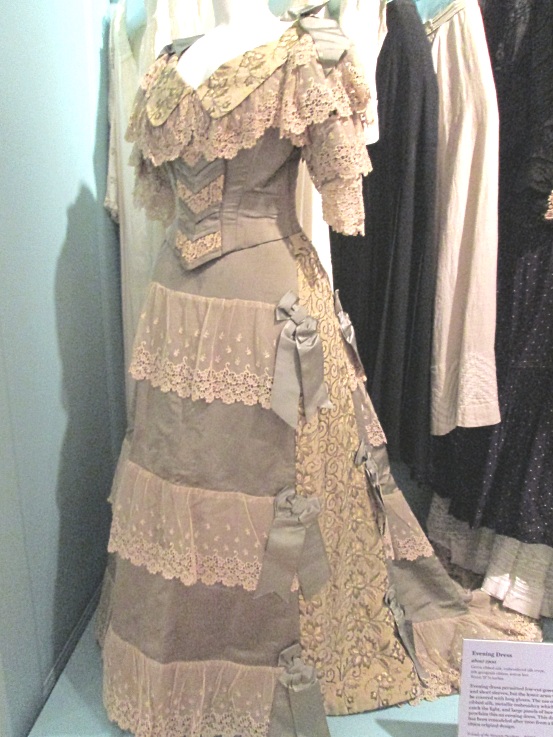

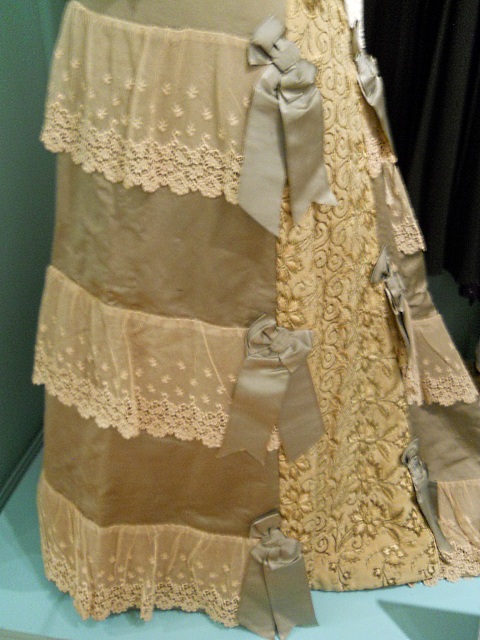

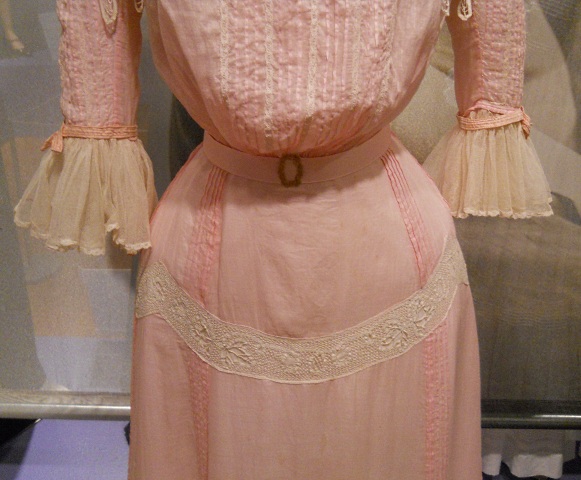
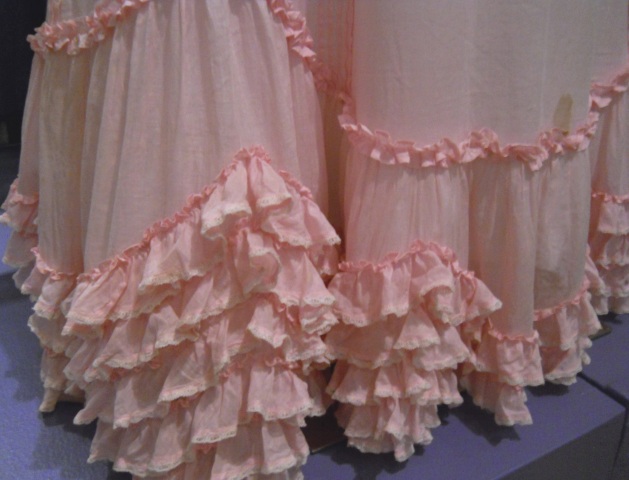

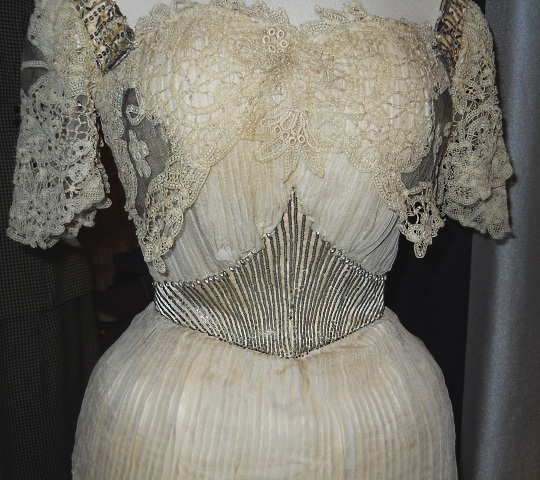
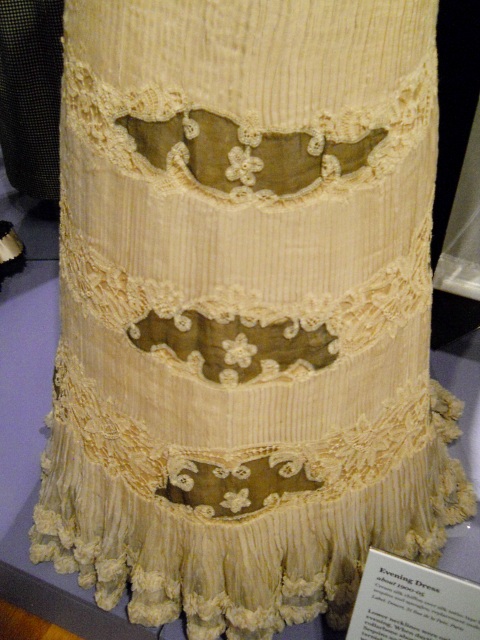
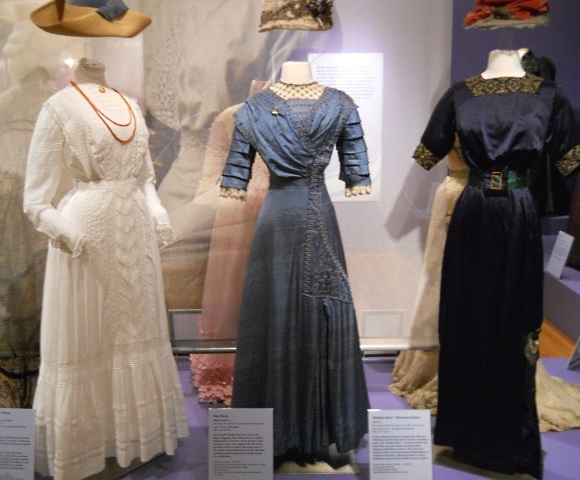
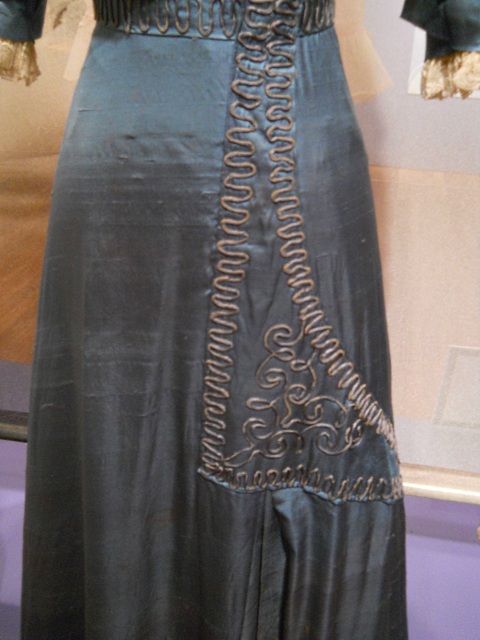

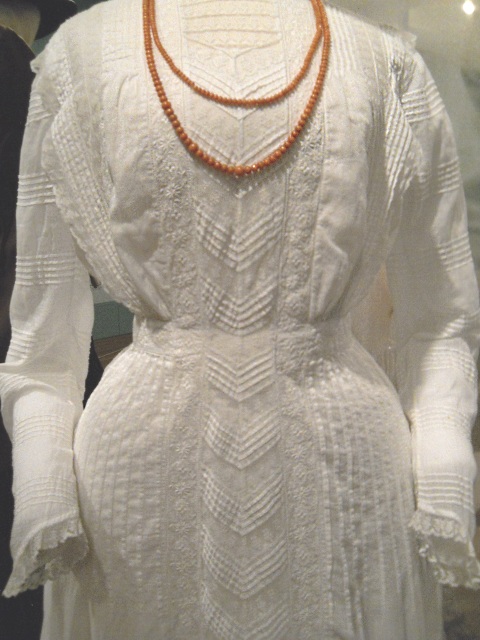
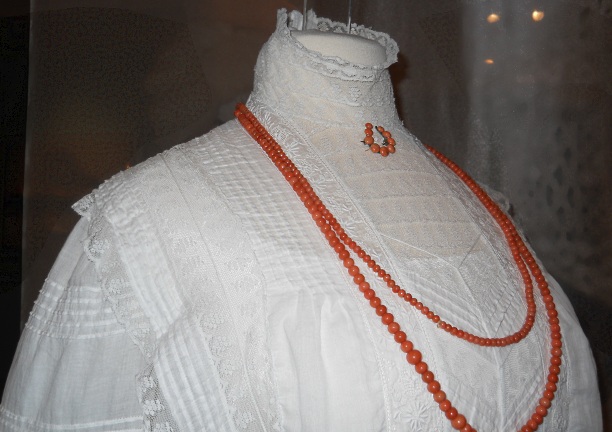


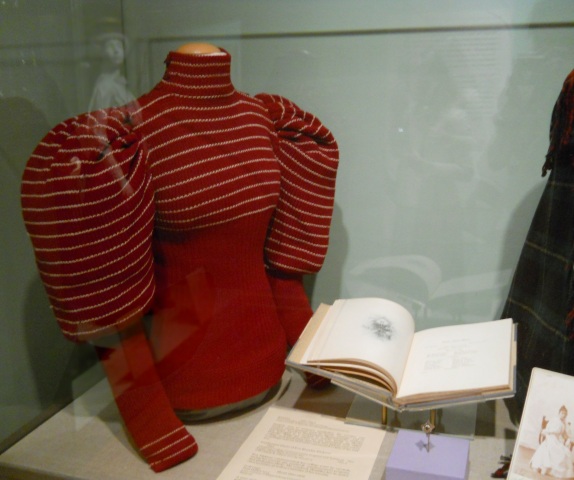
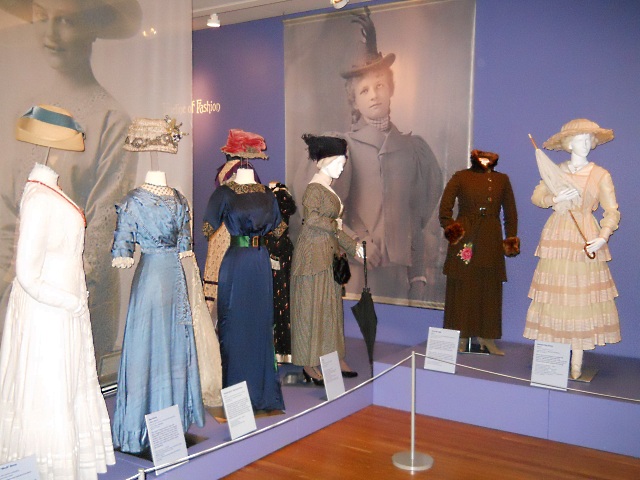


The pink one and blue one are my favourite! 🙂
Those leg-of-mutton sleeves are very tricky to make. I made a dress for ‘The Importance Of Being Earnest’ (1895) for my Drama Costume exam. They took a lot of time and netting, but it was worth it because I got 100% for the costume!
LOVE the pink ruffled day dress..just my style and color…and the white “washdress”…love that too.I have done some of this type of sewing.Made a 2 piece dress(blouse and skirt)I put lots of pintucks and lace insertion in the bodice and sleeves…very time consuming and finicky work.Worth it though. Thanks for sharing.
Oh my goodness…those sleeves were just amazing 🙂 I so enjoy visiting museums that share past fashions. It makes appreciate sewing as an art form all the more 🙂 m.
Again so excited that you were able to visit this exhibit! Did you see that they have the photo of the girl in her graduation dress too- I thought that was especially neat.
Katie, thank you! Yes, I have a picture of that girl in her graduation dress, though I must say I wish I had spent more time to study it in person. The exhibit has so much fabulous information that it would take hours to soak it all in. 🙂
Maria, my sentiments exactly! Sewing was definitely an art form back in the Edwardian era, and people put so much more detail into everything they created back then.
Colleen, you are right! This type of heirloom sewing can be rather time consuming, can’t it? 🙂 I’m glad we have people like Martha Pullen out there who are so enthusiastic about carrying on the age-old techniques.
Henry, that’s wonderful. If you must take a costume exam, the 1890s would definitely be one of the best eras to be tested on!
hi just wanted to included both my grandmothers memories born in 1890’s and both very into clothing they loved the thirty’s for comfort, all these dresses were uncomfortable and many could not be washed this meant layers of undergarments to protect the dresses from sweat they were taken off as soon as possible, they didn’t like the 50′ for the same reason to tight and uncomfortable and corsets became waisted again. the dresses and all the undergarments weighed alot and were tiring to wear you also could not fill your lungs with air. They loved the seventies with the feminine style without the lack of comfort, and having washable fabrics, and one lived in house coats at home loose and practical (the other lived in liberty clothing) but looking at the photo’s when they were young women they looked so beautiful they lived in an era when they were still dressing for dinner and wearing the right clothing at the right time was so important.I just thought you might like the opinons of people that actually wore these clothes (but when they were young they would of put up with the lack of comfort and air just to look beautiful-which they did) Also in the green gables books the clothing is quite different the way they dressed marilla was totally wrong she wore nothing ornate that said they costumes in the film are amazing I wish you would make some patterns (annes palid dress) I have contacted sullivan productions to try and talk them into it maybe you could partner with them anyway thanks for your amazing work it’s such an inspiration
Hi, Grace!
Thanks for the comment. 🙂 Yes, I’m sure that some women didn’t enjoy all the layers and corsets it required to pull off that look, but even today we still have those who are willing to sacrifice comfort for fashion – such as wearing pinchy high heels for a special occasion, or even a corset-like shaper for a wedding or formal event. It is true that certain eras have been more comfortable than others (I’m sure glad I didn’t live in the 1880s!), but sometimes looking nice can be more important than feeling nice. 🙂 Honestly, I don’t know how in the world women wore four or five layers in summertime as they would have had to with the dresses I saw in the DAR Museum, but really what I love about these styles is just how elegant they looked! I’m sure thankful that in the summertime I can wear a short sleeved blouse and a nice, flowy skirt, but I can’t help but admire the regal fashions from one hundred years ago.
Thank you for your suggestion about an “Avonlea” style pattern. I actually reproduced Diana Barry’s pink honeymoon gown last year, which you can see here.
Thanks again for the thoughts, and have a wonderful weekend!
I love the green evening silk gown. Would like to own one. Too bad we are in a different era, I won’t know where to wear it to.